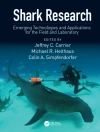Techniques in Endocrine Research covers the proceedings of the NATO Advanced Study Institute held at Stratford-upon-Avon, England, under the Auspices of the University of Birmingham. The book focuses on the techniques in endocrinology, as well as x-ray crystallography, electron microscopy, and autoradiography. The selection first offers information on x-ray crystallography in hormone research and the separation and significance of hormone containing subcellular particles, including formation of granules, specificity of granule storing capacity, chromaffin cell granules, and adrenergic nerve granules. The book also takes a look at the possibilities for the use of antibody staining techniques in electron microscopy and in the study of neurosecretion. The publication examines problems in the ultrastructure of endocrine glands, with special reference to the mammalian pituitary, autoradiography in endocrine research, and chromatographic methods of separations. The text also ponders on the state, transport, and regulation of hormones in blood; immunochemical methods in hormone research; and interpretation of biochemical techniques. Discussions focus on the state of insulin in human blood, state of pituitary hormones in blood, and transport of thyroxin in blood. The selection is a vital source of information for readers interested in the techniques in endocrinology.
Peter Eckstein & Francis Knowles
Techniques in Endocrine Research [PDF ebook]
Proceedings of a NATO Advanced Study Institute Held at Stratford-Upon-Avon, England, under the Auspices of the University of Birmingham
Techniques in Endocrine Research [PDF ebook]
Proceedings of a NATO Advanced Study Institute Held at Stratford-Upon-Avon, England, under the Auspices of the University of Birmingham
Dieses Ebook kaufen – und ein weitere GRATIS erhalten!
Sprache Englisch ● Format PDF ● ISBN 9781483270876 ● Herausgeber Peter Eckstein & Francis Knowles ● Verlag Elsevier Science ● Erscheinungsjahr 2013 ● herunterladbar 3 mal ● Währung EUR ● ID 5735358 ● Kopierschutz Adobe DRM
erfordert DRM-fähige Lesetechnologie












